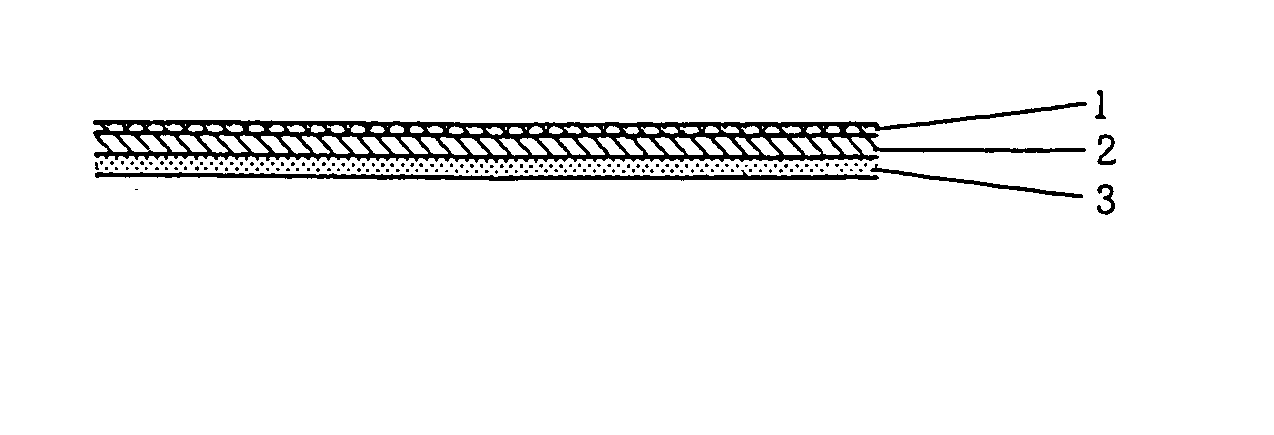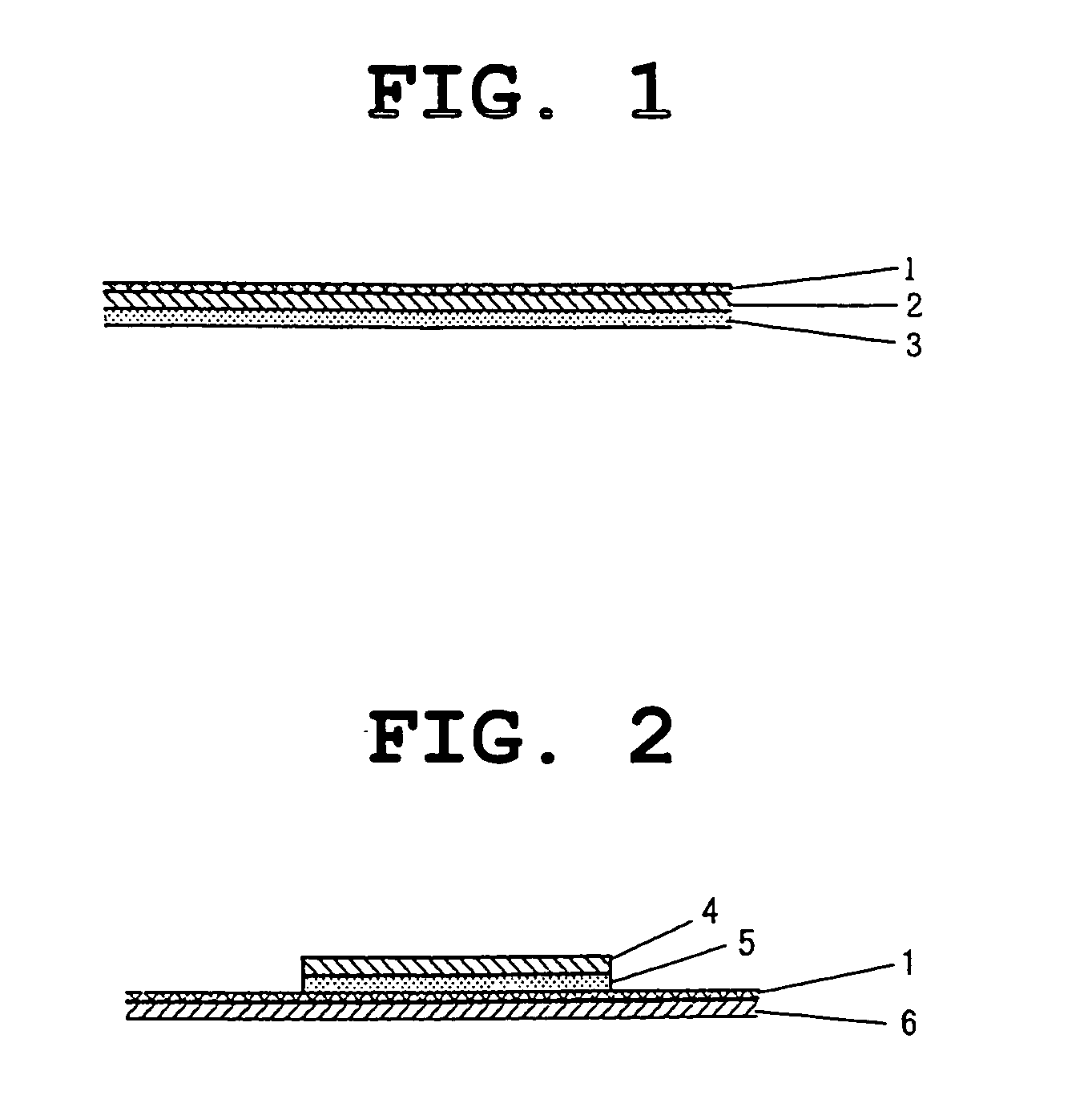Pressure-sensitive adhesive members and processes for producing the same
a technology of pressure-sensitive adhesives and adhesive components, which is applied in the field processes for producing the same, can solve the problems of secondary fouling of silicones, insufficient non-silicone release materials, and high cost of pressure-sensitive adhesive members such as pressure-sensitive adhesive tapes or labels in the field of precision electronics
- Summary
- Abstract
- Description
- Claims
- Application Information
AI Technical Summary
Benefits of technology
Problems solved by technology
Method used
Image
Examples
example 2
[0050] A mixture of 70 parts of low-density polyethylene having a density of 0.921 g / cm.sup.3 (Mirason NEO23H, manufactured by Mitsui Chemicals, Inc.) and 30 parts of the ethylene / .alpha.-olefin copolymer (Tafmer P0180) was applied by extrusion coating at 250.degree. C. to a 50 .mu.m-thick polyester film through an undercoat layer to obtain a release liner in which a release layer having a thickness of 20 .mu.m had been laminated. A pressure-sensitive adhesive member was obtained in the same manner as in Example 1, except that the release liner thus obtained was used.
example 3
[0051] A pressure-sensitive adhesive member was obtained in the same manner as in Example 1, except that the aging conditions were changed to 40.degree. C. and 48 hours.
example 4
[0058] An ethylene / 1-hexene copolymer (J-REX LLAC41SA, manufactured by Japan Polyolefins Co., Ltd.) as a linear ethylene-based resin and polypropylene (FY-4, manufactured by Japan Polychem Corp.) were coextrusion-molded at 230.degree. C. to obtain a release liner consisting of a laminate composed of a release layer having a thickness of 30 .mu.m and a polypropylene layer having a thickness of 80 .mu.m. The linear ethylene-based resin was analyzed with a cross fractionation chromatograph (CFC Type T-150A) by the temperature rising elution fractionation method (the same applies hereinafter). As a result, the amount of components eluted at the temperatures not higher than 30.degree. C. was 7.8% by weight based on the whole resin.
[0059] On the other hand, an acrylic pressure-sensitive adhesive layer having a thickness of 30 .mu.m was formed on the corona-treated side of a 50 .mu.m-thick white polyester film (W400C, manufactured by Mitsubishi Chemical Corp.). This pressure-sensitive adhe...
PUM
| Property | Measurement | Unit |
|---|---|---|
| temperature | aaaaa | aaaaa |
| temperature | aaaaa | aaaaa |
| temperature rising elution fractionation method | aaaaa | aaaaa |
Abstract
Description
Claims
Application Information
 Login to View More
Login to View More - R&D
- Intellectual Property
- Life Sciences
- Materials
- Tech Scout
- Unparalleled Data Quality
- Higher Quality Content
- 60% Fewer Hallucinations
Browse by: Latest US Patents, China's latest patents, Technical Efficacy Thesaurus, Application Domain, Technology Topic, Popular Technical Reports.
© 2025 PatSnap. All rights reserved.Legal|Privacy policy|Modern Slavery Act Transparency Statement|Sitemap|About US| Contact US: help@patsnap.com


